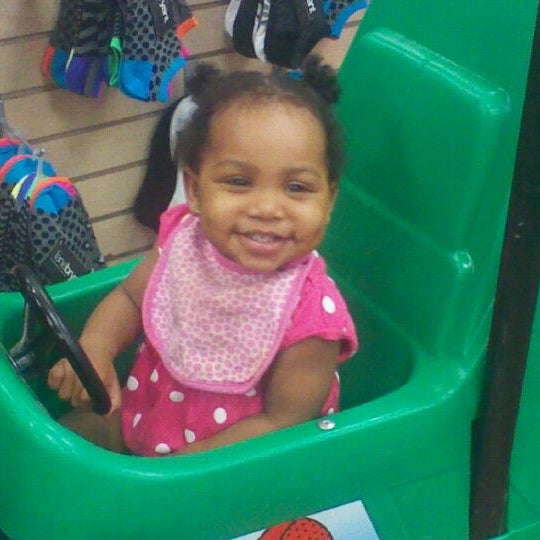Little people child care: Childcare | Litttle People Child Care
Little People Child Care Center at Jarboe Educational Center
About the Provider
Description: Little People Child Care Center at Jarboe Educational Center is a Licensed Child Care Center in Lexington Park MD, with a maximum capacity of 123 children. This child care center helps with children in the age range of 6 weeks through 17 months, 18 months through 23 months, 2 years, 3 years, 4 years, 5 years, 5 years to 15 years. The provider does not participate in a subsidized child care program.
Program and Licensing Details
- License Number:
127444 - Capacity:
123 - Age Range:
6 weeks through 17 months, 18 months through 23 months, 2 years, 3 years, 4 years, 5 years, 5 years to 15 years - Enrolled in Subsidized Child Care Program:
No - Schools Served:
George W. Carver Elementary School - District Office:
Region 10 – Southern Maryland Office - District Office Phone:
(301) 475-3770 (Note: This is not the facility phone number.)
Inspection/Report History
Where possible, ChildcareCenter provides inspection reports as a service to families. This information is deemed reliable,
but is not guaranteed. We encourage families to contact the daycare provider directly with any questions or concerns,
as the provider may have already addressed some or all issues. Reports can also be verified with your local daycare licensing office.
| Date | Type | Regulations | Status |
|---|---|---|---|
| 2022-03-03 | Mandatory Review | 13A.16.03.02D(2) | Corrected |
| Findings: MV needs an infant/toddler individualized schedule. |
|||
| 2022-03-03 | Mandatory Review | 13A.16.03.04C | Corrected |
| Findings: All emergency cards were reviewed. 10 are missing information or needing an update.  Please have these emergency cards corrected. Please have these emergency cards corrected. |
|||
| 2022-03-03 | Mandatory Review | 13A.16.03.04D(3) | Corrected |
| Findings: 24 records were reviewed. One child needs the doctor part of the health inventory completed. |
|||
| 2022-03-03 | Mandatory Review | 13A.16.03.04E | Corrected |
| Findings: 24 records were reviewed. There were 5 children who need a lead blood test either for the 12 month check or the 24 month check. |
|||
| 2022-03-03 | Mandatory Review | 13A.16.03.04G | Corrected |
| Findings: 24 records were reviewed. 7 children need an updated shot record that shows they have the correct number of immunizations for their age and 1 child needs an immunization record . |
|||
| 2022-03-03 | Mandatory Review | 13A. 16.03.05B 16.03.05B |
Corrected |
| Findings: Staffing pattern needs to be updated for rooms 120 and 118(preschool side). The staffing pattern is needed for Room 208. |
|||
| 2022-03-03 | Mandatory Review | 13A.16.05.12E | Corrected |
| Findings: One of the tricycles has a broken seat. It doesn’t stay in place – spins around. Center needs to fix this seat or remove the tricycle. |
|||
| 2022-03-03 | Mandatory Review | 13A.16.06.09A(5) | Corrected |
| Findings: DM has been employed at the center since 2018. There is no evidence that she has completed the Basic Health and Safety training. She needs to show evidence or complete ASAP. |
|||
| 2022-03-03 | Mandatory Review | 13A.16.06.09C | Corrected |
| Findings: RO’s continued training was due October 2021.  She didn’t complete it until December 2021. She is reminded to complete her continued training by the end of October each year. She didn’t complete it until December 2021. She is reminded to complete her continued training by the end of October each year. |
|||
| 2022-03-03 | Mandatory Review | 13A.16.10.04I(1) | Corrected |
| Findings: The cords were down on the blinds in room 205. These were tied up during the inspection. |
|||
| 2022-03-03 | Mandatory Review | 13A.16.11.03A | Corrected |
| Findings: The hand washing sink in room 120 needs a hand washing poster. |
|||
| 2022-03-03 | Mandatory Review | 13A.16.12.04A(2) | Corrected |
| Findings: The refrigerators in room 207 and 205 were registering warmer than 40 degrees. The refrigerator in Room said 53 degrees and the one in 205 said 50 degrees. Center needs to get these refrigerators at 40 degrees.  The microwaves in room 118 (preschool side) and 208 need cleaning. The microwaves in room 118 (preschool side) and 208 need cleaning. |
|||
| 2021-02-08 | Full | 13A.16.03.02E | Corrected |
| Findings: Discussed regulation. Due to the COVID 19 emergency the licensing specialist was unable to review all children’s files. It was observed that three children were missing appropriate lead tests in their files. The director will let the parents know and notify the licensing specialist when these have been completed. |
|||
| 2021-02-08 | Full | 13A.16.03.03D | Corrected |
| Findings: Discussed regulation. Due to the COVID 19 emergency the licensing specialist was unable to review the children’s files. It was observed that three children did not have a written contract signed by the parent in their file. The director will have the parent sign a contract and notify the licensing specialist when this has been completed.  |
|||
| 2021-02-08 | Full | 13A.16.03.04C | Open |
| Findings: Discussed regulation. Due to the COVID 19 emergency the licensing specialist was unable to review the children’s files. The emergency cards were reviewed by the licensing specialist and six children needed their emergency cards updated. The director will have the parents update these cards and notify the licensing specialist when this has been completed. |
|||
If you are a provider and you believe any information is incorrect, please contact us. We will research your concern and make corrections accordingly.
Reviews
Be the first to review this childcare provider.
Write a review about Little People Child Care Center at Jarboe Educational Center. Let other families know what’s great, or what could be improved.
Please read our brief review guidelines to make your review as helpful as possible.
Email address (will not be published):
Display name:
Which best describes your experience?:
Select from belowI have used this provider for more than 6 monthsI have used this provider for less than 6 monthsI have toured this provider’s facility, but have not used its servicesI am the ownerI am an employeeOther
Rating (1=poor, 5=excellent):
Select your Rating1 star2 star3 star4 star5 star
Review Policy:
ChildcareCenter.
only the opinion of the writer. We ask that users follow our
review guidelines. If you see a review that does not reflect these guidelines, you can email us. We will assess
the review and decide the appropriate next step. Please note – we will not remove a review simply because it is
negative. Providers are welcome to respond to parental reviews, however we ask that they identify themselves as
the provider.
Little People Child Care Center, Inc.
Little People Child Care Center, Inc. – Care.com Lexington Park, MD Child Care Center
Costimate™
$172
per week
Ratings
Availability
Costimate™
$172/week
Ratings
Availability
At Care.com, we realize that cost of care is a big consideration for families. That’s why we are offering an estimate which is based on an average of known rates charged by similar businesses in the area.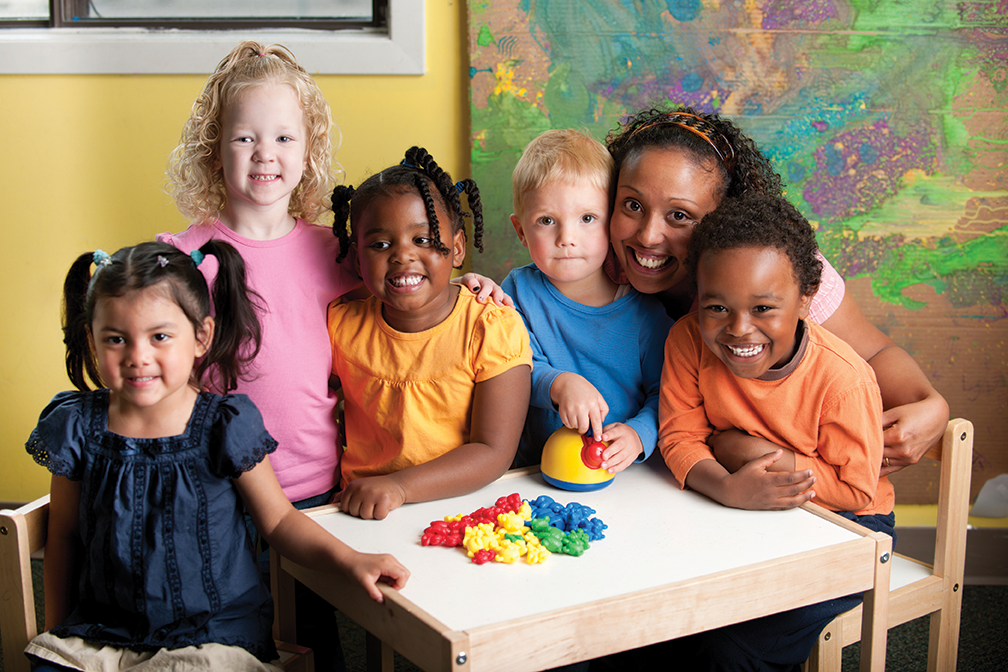
Details and information displayed here were provided by this business and may not reflect its current status. We strongly encourage you to perform your own research when selecting a care provider.
The Little People Child Care Center, Inc. is a licensed childcare and educational facility located at 21230 Great Mills Road, Lexington Park, Maryland. It is open Mondays through Fridays, 7:00 AM to 5:30 PM and can accommodate a maximum of 50 children. The center serves infants, toddlers, preschool and school-age children.
In business since: 1988
Total Employees: 2-10
Care.com has not verified this business license.
We strongly encourage you to contact this provider directly or
Maryland’s
licensing
department
to verify their license, qualifications, and credentials.
The Care.com Safety Center
has many resources and tools to assist you in verifying and evaluating
potential care providers.
|
Monday : |
7:00AM – 5:30PM |
|
Tuesday : |
7:00AM – 5:30PM |
|
Wednesday : |
7:00AM – 5:30PM |
|
Thursday : |
7:00AM – 5:30PM |
|
Friday : |
7:00AM – 5:30PM |
|
Saturday : |
Closed |
|
Sunday : |
Closed |
Type
Child Care Center/Day Care Center
Preschool (or Nursery School or Pre-K)
Kindergarten
Program Capacity:
50
OFFERINGS
Full Time (5 days/wk)
We appreciate you contributing to Care.com. If you’d like to become a member, it’s fast, easy — and free!
Join now
No thanks, not right now
No thanks, not right now
Join now
Wonderland Child Care Center
46925 Crocus Street
,
Lexington Park,
MD
20653
Little Kingdom Learning Center, LLC
46925 Crocus Street
,
Lexington Park,
MD
20653
Delightful Care -Care for the elderly
45597 Skreen Way
,
Great Mills,
MD
20634
Little People Child Care Center at Jarboe Educational Center
Lexwood Drive Suite B
,
Lexington Park,
MD
20653
Bay Montessori School Inc
20525 Willows Rd
,
Lexington Park,
MD
20653
By clicking “Submit,” I agree to the Care.
Care.com to share this information with all similar local businesses.
Care.com only verifies the license of a business.
Any other information, including awards and accreditation, hours, and cost, were provided by this business and may not reflect its current status.
We strongly encourage you to verify the license, qualifications, and credentials of any care providers on your own. Care.com does not endorse or recommend any particular business.
The Care.com Safety Center has many resources and tools to assist you in verifying and evaluating potential care providers.
{{#data.ctaLocations}}
{{name}}
{{city}} {{state}}, {{zipCode}}
{{#compare rating ‘0.0’ operator=”==” }}
{{/compare}}
{{#compare rating ‘0.
{{/compare}}
{{#compare rating ‘1.0’ operator=”==” }}
{{/compare}}
{{#compare rating ‘1.5’ operator=”==” }}
{{/compare}}
{{#compare rating ‘2.0’ operator=”==” }}
{{/compare}}
{{#compare rating ‘2.5’ operator=”==” }}
{{/compare}}
{{#compare rating ‘3.0’ operator=”==” }}
{{/compare}}
{{#compare rating ‘3.5’ operator=”==” }}
{{/compare}}
{{#compare rating ‘4.0’ operator=”==” }}
{{/compare}}
{{#compare rating ‘4.5’ operator=”==” }}
{{/compare}}
{{#compare rating ‘5.0’ operator=”==” }}
{{/compare}}
({{totalReviews}})
{{/data.ctaLocations}}
No
thanks, not right now
No
thanks, not right now
Search now
No thanks, not
right now
No thanks, not right
now Search
Now
Child Care / Preschools / Preschools in Lexington Park, MD / Little People Child Care Center, Inc.
Join free today
Sign up now! It only takes a few minutes.
Let’s go
I’d like to…
Find care
Apply to care jobs
Who needs care?
My kids
My parents
My pets
My household
What type of ?
Babysitter
Nanny
Daycare center
Special needs
Tutoring and lessons
Date night
After school
I’m not exactly sure
Pet sitter
Dog walker
Pet day care
Boarding/kenneling
Groomer
Veterinarian
Housekeeper
Cleaning agency
House sitter
Personal assistant
In-home care
Transportation
Errands
Retirement facility
Dementia care
Companion care
When do you need ?
Right now
Within a week
Within a month or two
Just browsing
What services do you offer?
Babysitting and nannying
Special needs care
Tutoring or private lessons
Center-based child care
Senior care
Housekeeping
In-home child care
Pet care
Errands and house sitting
What best describes you?
Individual
Small business
Last, but not least…
Fill in the blanks to create your account.
Thanks—you’re almost there.
Create your login below.
First Name
Last Name
Address
City, State and ZIP
Password
I am a
BabysitterNannyChild Care CenterFamily Child Care (In-Home Daycare)Special Needs ProviderTutorPrivate Lesson InstructorSenior Care ProviderNursePet Care ProviderHousekeeperErrands & Odd Jobs Provider
How did you hear about us?
Streaming Video Ad (Hulu, Roku)Radio/Audio Ad (iHeart, Pandora, Podcast)InfluencerSearch Engine (Google, Bing)Facebook or InstagramYouTubeBillboardPress Coverage (News, Magazine, Blog)Banner AdCable TV AdParenting Group or ForumFriends or FamilyOther Social Media (Twitter, Pinterest, LinkedIn, TikTok)Other
By clicking “Join now”, you agree to our
Terms of Use and
Privacy Policy.
Password
ZIP Code
By clicking “Join now”, you agree to our
Terms of Use and
Privacy Policy.
First name
Last name
Address
City, State and ZIP
How did you hear about us?
Streaming Video Ad (Hulu, Roku)Radio/Audio Ad (iHeart, Pandora, Podcast)InfluencerSearch Engine (Google, Bing)Facebook or InstagramYouTubeBillboardPress Coverage (News, Magazine, Blog)Banner AdCable TV AdParenting Group or ForumFriends or FamilyOther Social Media (Twitter, Pinterest, LinkedIn, TikTok)Other
By clicking “Join now”, you agree to our
Terms of Use and
Privacy Policy.
Little People Childcare – Care.com Tempe, AZ
Little People Childcare – Care.com Tempe, AZ
Costimate™
$109
per week
Ratings
(1)
★★★★★
★★★★★
★★★★★
★★★★★
Availability
Costimate™
$109/week
Ratings
(1)
★★★★★
★★★★★
★★★★★
★★★★★
Availability
At Care.com, we realize that cost of care is a big consideration for families. That’s why we are offering an estimate which is based on an average of known rates charged by similar businesses in the area. For actual rates, contact the business directly.
Details and information displayed here were provided by this business and may not reflect its current status. We strongly encourage you to perform your own research when selecting a care provider.
Little People Childcare is a licensed childcare provider located at 227 E Fillmore Street, Tempe, Arizona. It caters to infants, toddlers, preschoolers and school-age children, providing them age-appropriate activities that enhance their physical, social and intellectual skills.
In business since: 2010
Total Employees: 1
Care.com has not verified this business license.
We strongly encourage you to contact this provider directly or
Arizona’s
licensing
department
to verify their license, qualifications, and credentials.
The Care.com Safety Center
has many resources and tools to assist you in verifying and evaluating
potential care providers.
|
Monday : |
6:00AM – 6:00PM |
|
Tuesday : |
6:00AM – 6:00PM |
|
Wednesday : |
6:00AM – 6:00PM |
|
Thursday : |
6:00AM – 6:00PM |
|
Friday : |
6:00AM – 6:00PM |
|
Saturday : |
Closed |
|
Sunday : |
Closed |
Type
Child Care Center/Day Care Center
Preschool (or Nursery School or Pre-K)
Kindergarten
Program Capacity:
10
OFFERINGS
Full Time (5 days/wk)
Extended Care (Before School)
Extended Care (After School)
08/01/2017
Cares for kids as if they are her own!
We appreciate you contributing to Care.com. If you’d like to become a member, it’s fast, easy — and free!
Join now
No thanks, not right now
No thanks, not right now
Join now
Already a member? Sign in
The email address on your Facebook account does not match your Care.com account. Please log in with your Care.com credentials and link the accounts in the ‘My Profile & Settings’ page.
or
Search now
No thanks, not
right now
No thanks, not right
now Search
Now
Discovery Time Childcare
1425 W Southern 7
,
Tempe,
AZ
85282
Calvary Christian Preschool & Daycare
2334 E.
,
Tempe,
AZ
85282
Mi Escuelita Child Care
2747 W Southern Ave
,
Tempe,
AZ
85282
The Yellow Brick House Daycare LLC
506 W University Dr
,
Mesa,
AZ
85201
Organic Garden Preschool & Enrichment
521 N Alma School Rd
,
Mesa,
AZ
85201
By clicking “Submit,” I agree to the Care.com Terms of Use and Privacy Policy and allow
Care.com to share this information with all similar local businesses.
Care.com only verifies the license of a business.
Any other information, including awards and accreditation, hours, and cost, were provided by this business and may not reflect its current status.
We strongly encourage you to verify the license, qualifications, and credentials of any care providers on your own. Care.com does not endorse or recommend any particular business.
The Care.com Safety Center has many resources and tools to assist you in verifying and evaluating potential care providers.
{{#data.ctaLocations}}
{{name}}
{{city}} {{state}}, {{zipCode}}
{{#compare rating ‘0.0’ operator=”==” }}
{{/compare}}
{{#compare rating ‘0.5’ operator=”==” }}
{{/compare}}
{{#compare rating ‘1.0’ operator=”==” }}
{{/compare}}
{{#compare rating ‘1.5’ operator=”==” }}
{{/compare}}
{{#compare rating ‘2.0’ operator=”==” }}
{{/compare}}
{{#compare rating ‘2.5’ operator=”==” }}
{{/compare}}
{{#compare rating ‘3.0’ operator=”==” }}
{{/compare}}
{{#compare rating ‘3.5’ operator=”==” }}
{{/compare}}
{{#compare rating ‘4.0’ operator=”==” }}
{{/compare}}
{{#compare rating ‘4.5’ operator=”==” }}
{{/compare}}
{{#compare rating ‘5.0’ operator=”==” }}
{{/compare}}
({{totalReviews}})
{{/data.
No
thanks, not right now
No
thanks, not right now
Child Care / Preschools / Preschools in Tempe, AZ / Little People Childcare
Join free today
Sign up now! It only takes a few minutes.
Let’s go
I’d like to…
Find care
Apply to care jobs
Who needs care?
My kids
My parents
My pets
My household
What type of ?
Babysitter
Nanny
Daycare center
Special needs
Tutoring and lessons
Date night
After school
I’m not exactly sure
Pet sitter
Dog walker
Pet day care
Boarding/kenneling
Groomer
Veterinarian
Housekeeper
Cleaning agency
House sitter
Personal assistant
In-home care
Transportation
Errands
Retirement facility
Dementia care
Companion care
When do you need ?
Right now
Within a week
Within a month or two
Just browsing
What services do you offer?
Babysitting and nannying
Special needs care
Tutoring or private lessons
Center-based child care
Senior care
Housekeeping
In-home child care
Pet care
Errands and house sitting
What best describes you?
Individual
Small business
Last, but not least.
Fill in the blanks to create your account.
Thanks—you’re almost there.
Create your login below.
First Name
Last Name
Address
City, State and ZIP
Password
I am a
BabysitterNannyChild Care CenterFamily Child Care (In-Home Daycare)Special Needs ProviderTutorPrivate Lesson InstructorSenior Care ProviderNursePet Care ProviderHousekeeperErrands & Odd Jobs Provider
How did you hear about us?
Parenting Group or ForumYouTubePress Coverage (News, Magazine, Blog)Banner AdOther Social Media (Twitter, Pinterest, LinkedIn, TikTok)Cable TV AdSearch Engine (Google, Bing)Radio/Audio Ad (iHeart, Pandora, Podcast)Streaming Video Ad (Hulu, Roku)Friends or FamilyBillboardFacebook or InstagramInfluencerOther
By clicking “Join now”, you agree to our
Terms of Use and
Privacy Policy.
Password
ZIP Code
By clicking “Join now”, you agree to our
Terms of Use and
Privacy Policy.
First name
Last name
Address
City, State and ZIP
How did you hear about us?
Parenting Group or ForumYouTubePress Coverage (News, Magazine, Blog)Banner AdOther Social Media (Twitter, Pinterest, LinkedIn, TikTok)Cable TV AdSearch Engine (Google, Bing)Radio/Audio Ad (iHeart, Pandora, Podcast)Streaming Video Ad (Hulu, Roku)Friends or FamilyBillboardFacebook or InstagramInfluencerOther
By clicking “Join now”, you agree to our
Terms of Use and
Privacy Policy.
Djungarian hamsters (djungarians): maintenance and care, photo
In addition to lovers of small and large rodents, Djungarian hamsters are bred by people who, for some reason, cannot or do not want to keep a larger pet, but want to have a living creature nearby. They are also bred as first pets for children. Dzungaria are very cute, active and inquisitive. They do not require difficult conditions of detention, any special care, they are unpretentious in food. True, they live three, maximum four years.
When getting hamsters, keep in mind that they multiply exponentially. But this problem is solved if we take only one animal of either sex. He will live alone.
Another feature of hamsters is their nocturnal lifestyle. So you may well get nightly rustling, creaking, sniffing and tapping of small claws. As for the rest, the jungars will not cause much trouble.
What colors are there?
The most common natural color: the back is gray-brown, with a pronounced black stripe along the spine. The tummy is light, the paws are also light on the inside. However, hamsters and other colors are bred in nurseries: pearls, mandarin, sapphire.
Mandarin repeats the natural pattern, but the coat is not dark, but light brown or even red.
Sapphire – gray-blue color
Pearls are the rarest. This is a white hamster. The pearl color is characterized by the absence of a dark stripe along the back.
Djungarian hamsters are not black or albinos, so if you come across one, it means that this is a representative of a different species.
How to take care of a jungar?
Keeping hamsters is easy, even small children can handle it. The main thing is to choose the right home.
The best option would be a cage, but not wooden and not with plastic rods, because a hamster can easily gnaw through them.
I advise you to choose special cages for rodents, they are pre-equipped with everything you need: a wheel for running, ladders, pipes for climbing, a house for rest. A small (10 cm long) house without windows (Ferplast Olimpia Cage for hamsters 46*29) is ideal for a djungarian*54) (Ferplast Hamster Duo Hamster Cage 58*42*33.5). Although the hamster itself is small, the cage should be chosen in large sizes, not less than 50 * 30 cm.
Place it in a quiet place, protected from the sun and drafts, but not near the radiators. Fill the bottom with a thick layer of filler – corn or cellulose, and put paper towels or napkins in the house to build a nest, in extreme cases (temporarily, you should not use them all the time) newspapers will do.
Sometimes hamsters are kept in large aquariums, about 40 cm in height and up to 100 cm in length. It is not recommended to keep small rodents in narrow containers with high walls, since the air in them circulates poorly. Because of this, bacteria harmful to the health of the animal multiply in the aquarium. In principle, it is possible to keep a hamster in an aquarium, but just carefully select the size and shape of the aquarium and make sure that the air does not stagnate in it.
Dzungaria are very clean animals. They constantly groom themselves with tongue and paws. Therefore, cleaning and even more so bathing hamsters is not necessary. Sometimes, if the fur is very dirty, you can give them a sand bath. Pour sand into the container (you can buy sand for chinchillas at the pet store) and run the hamster into it. Such entertainment will give him great pleasure.
Due to their cleanliness, the jungars do not cope with their natural needs throughout the cage, but organize a toilet place in one of the corners.
There are a few simple rules to help keep the cage clean:
- General cleaning with a complete change of bedding causes a lot of stress for the hamster, so wash the cage no more than once a week. To do this, use a sponge, simple laundry soap and hot water. You need to wash all the accessories: a bowl, a wheel, toys – everything that is in the cage.
- Clean the cage without waiting for a strong smell. Even with severe pollution, toxic chemicals such as bleach should not be used. If necessary, use vinegar to remove urine and odor stains, but rinse thoroughly after treatment.
- Hamsters have a very sensitive psyche. Cleaning with a rearrangement makes them nervous, especially with regard to food supplies, which, obeying instinct, the animal creates. If you constantly ruin the “pantry”, the dzhungarik is stressed, unsuccessfully trying to find a more secluded place in the cage. Therefore, remove only spoiled products.
- To reduce the stress of spring cleaning, leave some old litter and nest wipes in the cage.
Also, during cleaning, transplant the hamster into a small container so that the animal is less worried.
How and what to feed a hamster?
A hamster must have a feeder and drinker. Use a heavy ceramic bowl as a feeder so that the jungarian cannot turn it over. And fix the drinker on the wall of the cage – so it will be difficult to overturn it and fill everything with water.
Divide your hamster’s food into two meals: morning and evening. The easiest solution is to buy ready-made mix for hamsters and small rodents. But you can prepare it yourself. The mixture includes grains (oats, corn), peas, seeds, and nuts. Animals love these products very much and eat them with pleasure.
IMPORTANT! Do not use mixtures for large rodents – they have a different composition and can be harmful to the health of jungars.
In addition to the finished mixture, add juicy food to the hamster menu (vegetables: cucumber, zucchini, carrots, corn grains, herbs, lettuce; fruits: apple, pear, berries), and occasionally protein food (boiled chicken, low-fat cottage cheese, a piece of unsalted fat).
IMPORTANT! The list of products prohibited for hamsters includes: coniferous branches; various sausages and sausages; sour cream, cream, milk; butter; fruit pits; potatoes, mushrooms; onion and garlic; cabbage; mint; watermelon; citrus; chocolate, cookies, ice cream, gozinaki, honey, sugar; salt, spices.
In addition to food, you can please the hamster with special treats: edible sticks and spikelets. And a mineral stone or a birch bar for grinding teeth is also useful, because the teeth of rodents grow all their lives.
What do you need to know about communicating with relatives and people?
In nature, adult hamsters live alone. If you still decide to have a couple, it is better to take those that have been around since birth. When you try to add someone else’s hamster to someone already living with you, there is a high probability of a conflict. However, you can put a removable partition in the cage and let the animals get used to each other.
If you have a male and a female, then during pregnancy and rearing the cubs of the male, be sure to either place them in another cage or separate them with a partition. Otherwise, one of the parents will eat the offspring.
When a jungarian gets into your house, he needs 7-10 days to get used to a new environment – unfamiliar smells, a new cage, sounds around.
Set the cage so that, on the one hand, the animal sees and gets used to the voices and appearance of people, on the other hand, it should not be very noisy. In no case do not disturb the hamster during the day while sleeping.
Important! If you have other animals, they should not cause discomfort to the new pet.
Djungarian hamsters are peaceful and non-aggressive creatures. The domestic jungarik almost never bites, gets along well with children and trustfully falls asleep in the arms of the owner while he strokes him. But in order to be able to take a hamster in your arms, play with him, from the very beginning, accustom your pet to your hands.
The most important rule: the hamster should not experience stress, otherwise he will show aggression and the process of taming will drag on for a long time.
How to teach a hamster to handle?
You will need to be patient and spare no time.
- At the first stage, observe how he eats and drinks, how and when he plays, what hours he is active and what hours he rests.
- Try to talk more with the hamster, stay near the cage more often.
- When the animal gets used to you, stops hiding, start offering treats. He should associate the appearance of a tasty piece with you. Leave the treat in the cage first. Then offer a treat to the rodent through the rods or the door, while holding the pieces in your hands. When the hamster starts to come running to the smell, try to gently and slowly stick your hand through the door into the cage. As a treat, seeds and dried fruits are suitable.
- The next step is likely to take quite some time.
Once your hamster gets used to your hand in the cage, wait for the hamster to climb onto the palm of your hand in search of a treat. After some time, the pet will begin to eat from the hands and sit quietly in the palm of your hand.
- The final step can be considered the moment when the hamster is so bold that you can pick it up. Gradually try to pull your hand out of the cage along with the animal. BUT do not rush, do everything calmly, slowly, in a quiet voice, saying kind words. As you understand, intonation (calm and friendly) is more important.
The Dzungarian hamster is perfect to become the first pet in life. He is picky in food, does not require special care, has almost no smell, does not bite and is sold in almost any pet store. But imagine how much joy and pleasure communication with these charming fluffy babies will bring to you and your children!
Anton Koteikin, a consultant of the online store Samizoo.ru, was with you.
“That’s my friend!” Why do children sometimes interact with strangers?
You will probably also remember people in your life who were much older than you, but you were connected or still are connected by friendship.
Anna Skavitina, psychologist, analyst, member of the IAAP (International Association of Analytical Psychology), supervisor of the ROAP and the Jung Institute (Zurich), expert of the Psychology journal
– Will grandfather come out for a walk? – I asked the five-year-old me, knocking on the door of a neighbor. Sometimes grandfather went with me to the yard to make secrets from candy wrappers and glass or invited me to drink tea with jam: his wife arranged the cups on a snow-white lace tablecloth. My neighbor’s grandfather taught me to play checkers, my grandmother showed me how to knit. Their children either grew up and moved away, or maybe they didn’t exist.
General experience
People, as A. Zhukov writes, are “social animals”. Living together has always been important for our survival, and especially for our offspring. People lived in communes, extended families, there was always the opportunity not only to provide each other with protection, but also more successful hunting, as well as to distribute different activities among themselves and support each other. The trouble with today’s parenthood is isolation from each other, from relatives. Life in small families is often very difficult for parents without the necessary support and the ability to distribute childcare among relatives. And also learn how to care for children – watching how older relatives do it. That is why today’s mothers often feel completely incompetent as mothers, because they simply did not have anywhere to learn it.
Psychologists say that our troubles come from childhood, everything very much in our adult life depends on how our mother coped with caring for the child.
When people lived in large communes or villages, the child had the opportunity to “take care and love,” if it is lacking, from other relatives, to learn from them something that parents do not know how. Even just to be close to those who can do it – in the village. In case of emotional difficulties, write “to the grandfather’s village” or run to the aunt.
If there are many caring and loving adults, then if one of them is emotionally, mentally or physically unhealthy, then the rest of the relatives can somehow smooth it out, compensate. And if there are only one or two of these relatives? Here any word becomes exorbitantly significant! And even my childhood friendship with the neighbor’s grandfather looks somehow ambiguous now. And what attracted him in communicating with the child? Yes, just an opportunity to make up for your parental underrealized part.
Learning to communicate
But not only for knowledge and emotional support a child can value relationships with adult friends. Perhaps you had an experience when your mother’s or father’s friends came to visit the house, and you were waiting for them, and you were seated at an adult table, allowed to participate in adult conversations. The experience in which you, the little one, the last or penultimate in the family in the hierarchy, is taken for an equal. Often, in friendly relations with adults, the child gains experience of a different status, which helps to feel more confident and self-worth. Teenagers who feel rejected by their peers in such relationships have the opportunity to raise their self-esteem and feel accepted – even in a cooler society than peer society.
Often, talented, erudite guys who overtake their peers in some area become too incomprehensible to their peers, so they do not fit into peer groups. For their development, it is important to look for circles, camps, schools or clubs where there are people with similar interests.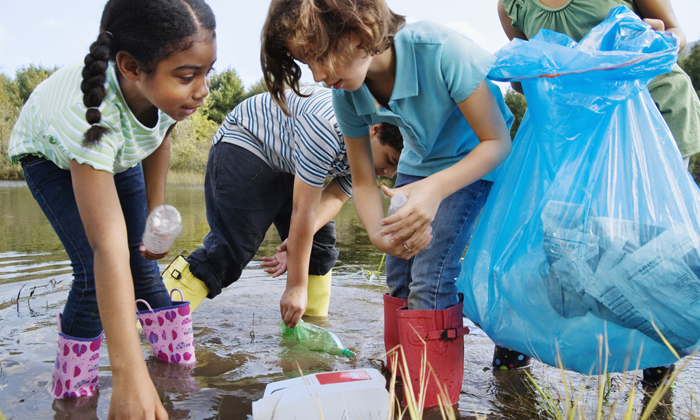
Children who constantly choose older friends as friends and are almost not friends with their peers often feel insufficiently competent in communication situations: the ability to control their emotions, resolve conflicts. Adults usually take over these functions, and the child can safely learn these skills. But if a child does not want to “test” his acquired skills on peers, he may need additional help from parents, teachers or psychologists in mastering them.
Any doubts?
Of course, parents often fear that through adult friends the child will fall into the forbidden zone, gain knowledge and experience for which he is not yet ready due to his age, where he should not even look.
It is important that friendship with older children and adults should not be secret from parents, neither in real life nor in virtual. If a small child is not ready to share what is happening, to talk about these relationships, then parents have every reason to take a closer look at such friendship. And it is possible to take urgent measures, to stop communication.
Children of very busy parents often want to find a source of additional warmth and care, which they lack, so they look for an adult who is able to give what they lack. And the child endows an adult friend with ideal features, with everything that he would like to see in his specific parents, and often regardless of what this adult really is.
Read also:
Why every child (and even some adults) needs an imaginary friend
5 main differences between a modern child and children of past years , photo_oles, fizkes/Shutterstock
parenting tips
12 best pets for kids
Things to think about before getting a pet for your child
Pets bring joy and help instill a sense of responsibility in a child. At the same time, a thoughtless choice can end badly for both you and the animal.
In a PetMD article, veterinarian Lauri Hess tells These Are the Best Pets for Kids at Each Age / PetMD that many people get frustrated with their pets simply because they don’t know how to take care of them and what to expect.
So, before you go to the pet store or look for listings, consider a few points:
- How much space is needed. Estimate where your pet will live and whether you can place him away from the bed. Some animals, such as rats and hamsters, are nocturnal and can interfere with sleep.
- How much does it cost to take care of an animal. Will you be able to buy a spacious cage for a rodent and a suitable terrarium for a reptile, will you have enough money for quality food, bedding, training and a visit to the veterinarian.
- What will be interesting for the child. Some animals are well attached to people, others almost do not pay attention to them. What does your child want: to watch, to hold, to play, to walk with a pet?
- Will the child be able to interact with the animal. Think about whether your children are ready to carefully handle fragile animals, gradually tame disturbing ones and take care of those who require constant attention.
- What will you do if your child loses interest in a pet.
Even if the kids beg you to buy a furry friend, after a week they may completely forget about him. Think about whether you can take care of the animal yourself and how you will look for him a new home if you are not ready for the extra trouble.
In any case, before taking an animal, bird or reptile, find out as much as possible about them. Watch videos from experienced breeders, read grooming articles, and talk to people who already have such pets.
Below we list a few popular pets for kids, the main features and problems you may encounter.
What kind of pets can you get for children
1. Cat
Photo: Anastasia Naumtseva / Lifehacker
A great option for any living conditions. For the most part, cats are affectionate, playful and non-aggressive animals that do not require special care and give their owners a lot of positive emotions.
If you want to get a kitten, it is better to do it not earlier than your child is 3-4 years old. It is more difficult for kids to explain that a cat is not a toy, but a living being, which can also be painful and unpleasant if, for example, the tail is pulled or held against its will.
In addition, an older child can take on some of the responsibility for the cat. For example, at 5 years old, he is able to pour food and change water, and at 6–7 years old, he can comb his pet and clean the toilet.
You should not get a cat if:
- you are very worried about repairs and furniture. A pet can choose doorposts or a favorite sofa as a scratching post;
- someone in the family is allergic to cats;
- you are not ready to brush wool from clothes, furniture and everything in the house.
2. Dog
Photo: Evgenia Sevastyanova / Lifehacker
As a rule, families with children are advised to choose non-aggressive, friendly and non-competitive dogs. The list of the best usually includes 10 Best Family Dogs / American Kennel Club Labrador Retriever, Golden Retriever, Bulldog, Beagle, Irish Setter, Collie, French Bulldog.
But we must understand that even dogs of the same breed can be very different from each other due to the peculiarities of the psyche, and with proper education, almost any dog can become an affectionate and faithful friend.
The question is whether you are ready to devote enough time to it. Unlike cats and many other pets, dogs do require a lot of time and effort. We can say that when you get a dog, you bring another family member into the house. If you’re not ready to expand just yet, consider other options.
A dog is not suitable for you as a pet if:
- you are not ready to pay for food, trips to the veterinarian and cynologist;
- you don’t have time for daily walks and training;
- at home you value peace and quiet.
3. Budgerigar
Photo: pixel2013 / Pixabay
Bright, sociable and noisy birds are great for home keeping. They become attached to their owners, imitate speech and are even able to learn a few words.
Since a small child can inadvertently harm a fragile pet, it is better to get parakeets for children over five years old. And it is advisable to immediately take at least two, so that they are not bored.
In addition, it is worth considering that parrots need periodic flights to keep their wings in good shape.
It is better not to have a parrot if:
- you are not ready to put up with constant noise;
- you plan to have only one bird and are not ready to devote much time to it;
- you are not sure that the child will be able to handle the pet carefully.
4. Rat
Photo: Iya Zorina / Lifehacker
Rats are smart and active, they are not afraid of people and other pets, they climb well, jump far and love to explore something new. Watching them is pure pleasure.
The child will be able to carry a pet on his shoulder, play with him and even take him for a walk. Decorative rats are very friendly, quickly get used to the owners and do not bite.
But their claws leave micro-scratches on the skin, which then itch. This passes quickly, but is still unpleasant, so it is better if the rat runs on clothes, and not on bare shoulders and neck.
Even if the children promise to spend a lot of time with the rodent, it is better not to keep the rat alone – she will be bored. Better take two same-sex individuals or a whole company.
It’s better not to have rats if you:
- are going to keep a cage in the room where you sleep. Rodents are active at dusk and make noise at night;
- know that the child is very attached to pets. Rats live for about 3 years and often get sick;
- you want to have only one animal and are not ready to devote much time to it.
Learn 🐭
- What you need to know before getting a pet rat
5. Chinchilla
Photo: Lidia Suyagina / Lifehacker
These cute rodents have very soft and fluffy fur, big eyes and cute paws that look like little hands. But at the same time, you should think twice before giving such a charming child to a child.
Chinchillas are not particularly contact, they need to be tamed, and if they get scared, they can bite.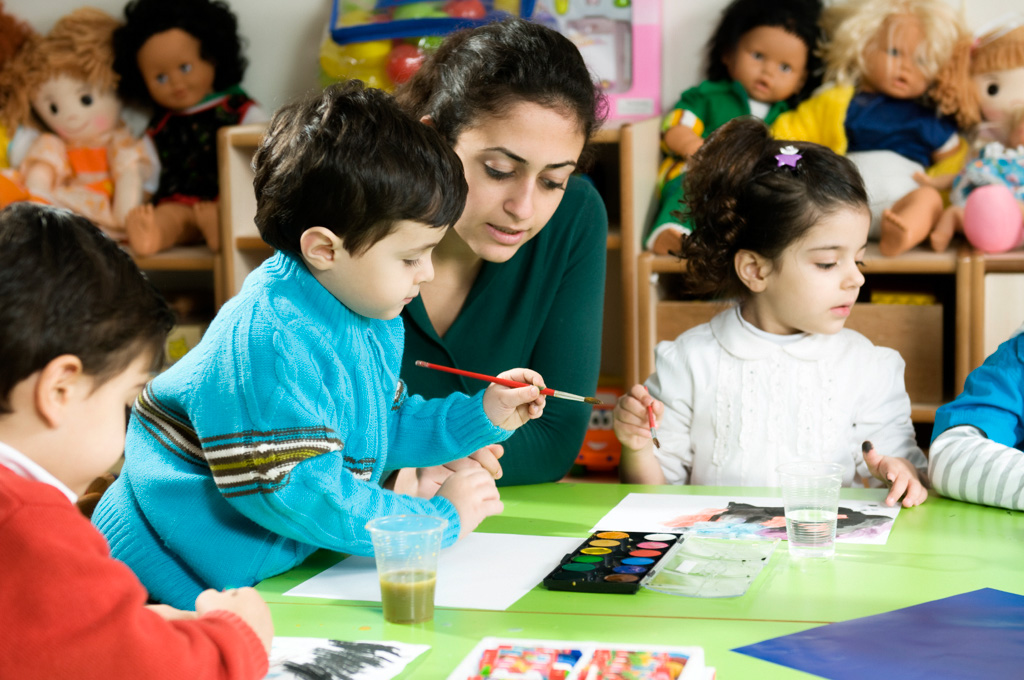
Therefore, you should not get a chinchilla for a child under 10-12 years old. First you need to make sure that he can learn all the rules for handling a gentle animal and treat him with care.
When it comes to grooming, chinchillas need a large cage with a plastic or wooden bottom, as rods can irritate the animal’s paws, sand baths and temperature control – they are very sensitive to overheating.
You shouldn’t get a chinchilla if:
- you want a contact pet who can be picked up all the time;
- there is no room for a large cage in the apartment;
- you are allergic to animals;
- you can’t put the cage where the fuss and cries of the chinchilla won’t be heard at night.
6. Rabbit
Photo: Daria Gromova / Lifehacker
These fluffy pets are quite smart. They can be trained, they can remember their name and respond to it, they are accustomed to the tray.
However, it must be taken into account that it must be taken correctly and in no case should it be grabbed by the ears. Otherwise, a frightened rabbit may bite the offender or hit him hard enough with his hind legs.
It is best to get a rabbit for a child from 7–8 years old, so that the little owner treats the pet with care and can take care of him.
An adult rabbit is about the size of a cat, but requires much more attention. He needs a cage at least 120 x 60 x 120 cm or a special paddock in which he can move freely.
Some owners keep rabbits without a cage. If you decide to do this, keep in mind that pets will gnaw on everything wooden, including your furniture, they can ruin wires and other things. So it’s better not to leave them unattended.
Don’t get a rabbit if you:
- can’t buy a spacious cage or pen;
- are not ready to sweep up the debris, hair and feces that a rabbit will leave free-range;
- you are afraid that furniture, wallpaper and everything on the floor may be damaged.
7. Bearded dragon
Photo: Regina Smetankina
These are reptiles that like to sit on their hands. So if your child is into lizards, the bearded dragon is the best choice.
Keep this lizard Bearded Dragon For Beginners (The Complete Care Sheet) / Everything Reptiles in a spacious glass terrarium measuring approx. 30–40%.
In addition, the bearded lizard needs to be fed live insects – they make up 80% of the reptile’s diet, while only 20% comes from fruits, vegetables and greens. If you (and the child) are not scared by this, it will be very interesting.
Bearded Dragon is not for you if you:
- are not ready to spend money on a spacious terrarium, lamps and heating;
- are not sure that you will closely monitor the temperature regime and the presence of light;
- you hate the insects that you have to feed the lizard.
8. Hamster
Photo: metalboy25 / Pixabay
Hamsters look very nice, do not require much free space and tolerate loneliness well.
Despite their cute appearance, hamsters are not very sociable, require gradual taming and bite quite strongly if frightened. Therefore, you should not get such pets for small children, who so far cannot recognize a living creature in a soft ball with their needs and fears.
In terms of housing, the hamster needs a cage with dimensions of at least 50 x 40 x 30 cm, with a running wheel and a distance of no more than 1.5 cm between the bars so that the rodent does not escape. This animal cannot exist on a free range and, if lost, is very likely to get into trouble and die.
You shouldn’t have a hamster if:
- you can’t stand noise at night. Rodents are active at dusk, so if you put the cage where you sleep, it will interfere;
- the child is strongly attached to pets. Hamsters live only 2-3 years;
- you want to be able to play with your pet.
It all depends on the nature of the particular animal and your domestication efforts, but still some hamsters can avoid contact with people, so the child will only have to watch him.
9. Achatina snail
Photo: Valeriia Miller / Pexels
If your child likes exotic pets, giant Achatina can be a great choice. Such pets will not cause any inconvenience – they will not make noise and scatter garbage, they will not bite or scratch the baby. At the same time, they live for quite a long time – up to 10 years.
Snail care is also easy. Achatina live in a terrarium or a ventilated container with a volume of 10 liters or more, on a bedding of soil or coconut substrate. It is important to maintain a temperature of 24-28 ° C and a humidity of 70-85% in the habitat, and change the filler and water in a timely manner.
Snails eat once a day, fruits and vegetables such as apples, cucumbers, carrots, lettuce. Achatina is also recommended to give calcium supplements, for example, from crushed eggshells.
You should not get a snail if:
- your child wants an active pet that will be interesting to play with;
- you are not ready to seriously approach the arrangement of the terrarium, maintaining the desired temperature and humidity. If the snail is cold, it can hide in its shell and fall into suspended animation.
10. Canary
Photo: Ralphs_Fotos / Pixabay
Canaries are suitable for children who enjoy watching animals more than interacting with them.
These bright and beautiful birds are easy to care for All About Finches and Canaries / PetMD. Unlike parrots, they cannot pinch a finger painfully and do not need occasional flights outside the cage.
However, canaries do not tolerate loneliness, so it is advisable to take several individuals at once. If you want songbirds, take males – they are more vociferous, and their trills are more melodic.
A rectangular cage with several perches is suitable for keeping a canary.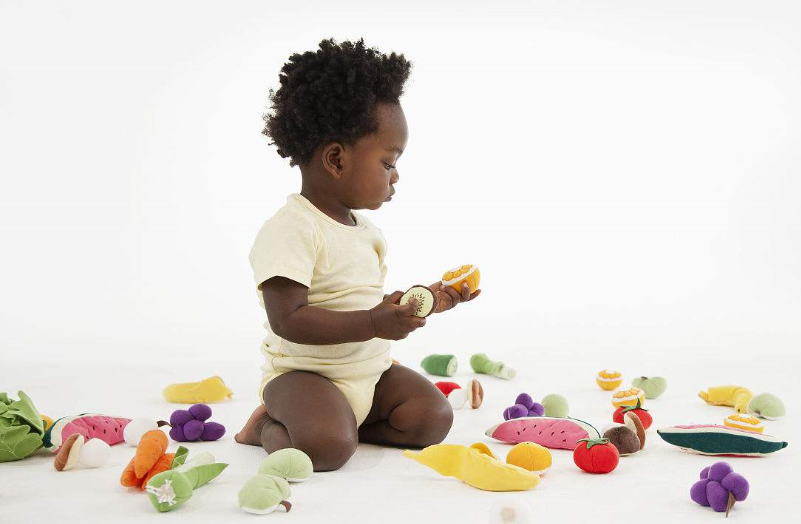
Do not take a canary if:
- you are annoyed by noise, fuss and chirping;
- your child is not careful enough and can harm a fragile pet.
11. Yemeni chameleon
Photo: aixklusiv / Pixabay
This is a bright and beautiful reptile with a long tongue, lightning-fast reaction and eyes that rotate independently of each other. The chameleon is active during the daytime, so that the child can watch him and take the pet in his arms without fear.
To keep a chameleon, you will need a 60 x 45 x 90 cm terrarium with good ventilation, woody soil bedding and various snags and branches to crawl on.
As with the bearded lizard, the Yemeni chameleon definitely needs UV lamps, which should shine for 11-13 hours and then turn off. In order not to disturb its natural cycles, it is advisable to set a timer.
Particular attention should be paid to the heating of the terrarium. In the place where the chameleon is kept, there should be two zones: cold with a temperature of about 26 ° C and warm – from 35 ° C. In the second, the lizard will bask after eating.
Chameleons feed mainly on insects. They do not notice standing water, so you will have to install a drip drinker or waterfall.
As for taming a chameleon, at first the child can feed him from his hands, and when the lizard gets used to it, take it out of the terrarium. However, everything here depends on the particular individual – some get along well with people and become attached to the owners, others do not tolerate relationships outside their zone.
You shouldn’t have a chameleon if:
- you have an aversion to insects, as they form the main part of the lizard’s diet;
- are not ready to seriously approach the arrangement of the terrarium – take care of temperature, humidity, the presence of various snags and lighting.
12. Guinea pig
Photo: rubyclement / Pixabay
Guinea pigs rarely bite, but they are very shy and require some effort to tame. In order for the pet to feel comfortable and not be afraid of the owners, you need to gradually accustom it to hands, lure it with goodies and wait until the animal gets used to it and stops being scared.
If you are not sure that the child is attentive enough to cope with it on their own, try not to leave them unattended with the pet at first. Otherwise, the furry friend will be in constant stress, which will have a bad effect on his health.
Like rats, guinea pigs cannot stand loneliness, and a person cannot always replace his fellows with him. Therefore, it is better to have two individuals of the same sex at once so that they are not bored.
Since these rodents are quite large, keep them in a spacious cage at least a meter long and sometimes let them out for walks, making sure that the environment is safe.
Keep in mind that guinea pigs will urinate everywhere.







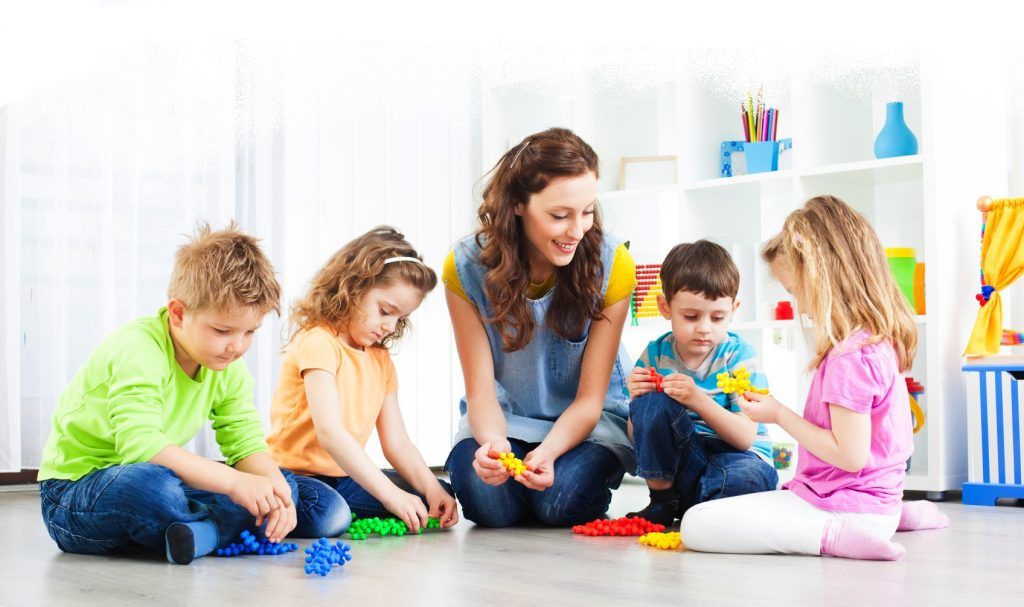 For
For com, we realize
com, we realize Also, during cleaning, transplant the hamster into a small container so that the animal is less worried.
Also, during cleaning, transplant the hamster into a small container so that the animal is less worried.  Once your hamster gets used to your hand in the cage, wait for the hamster to climb onto the palm of your hand in search of a treat. After some time, the pet will begin to eat from the hands and sit quietly in the palm of your hand.
Once your hamster gets used to your hand in the cage, wait for the hamster to climb onto the palm of your hand in search of a treat. After some time, the pet will begin to eat from the hands and sit quietly in the palm of your hand.  Even if the kids beg you to buy a furry friend, after a week they may completely forget about him. Think about whether you can take care of the animal yourself and how you will look for him a new home if you are not ready for the extra trouble.
Even if the kids beg you to buy a furry friend, after a week they may completely forget about him. Think about whether you can take care of the animal yourself and how you will look for him a new home if you are not ready for the extra trouble. 
 It all depends on the nature of the particular animal and your domestication efforts, but still some hamsters can avoid contact with people, so the child will only have to watch him.
It all depends on the nature of the particular animal and your domestication efforts, but still some hamsters can avoid contact with people, so the child will only have to watch him. 